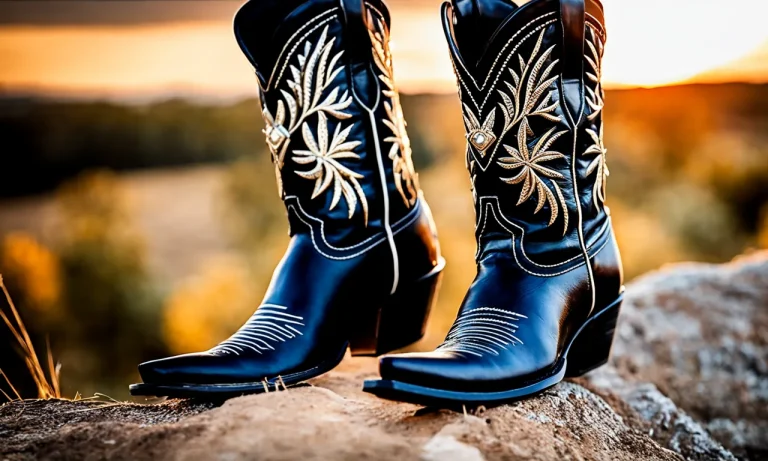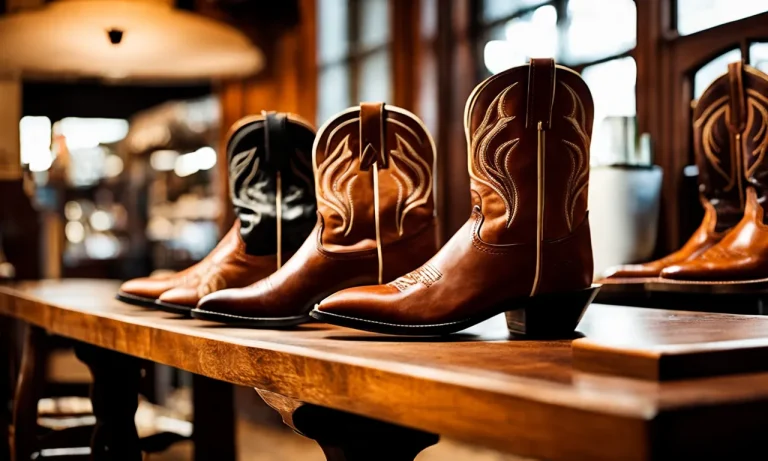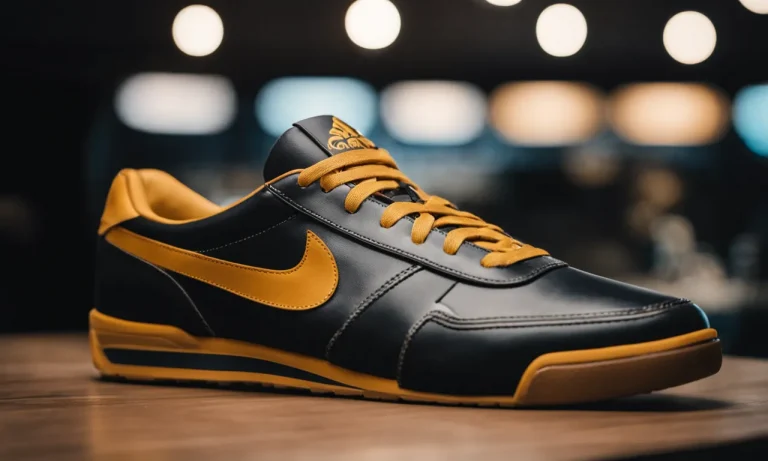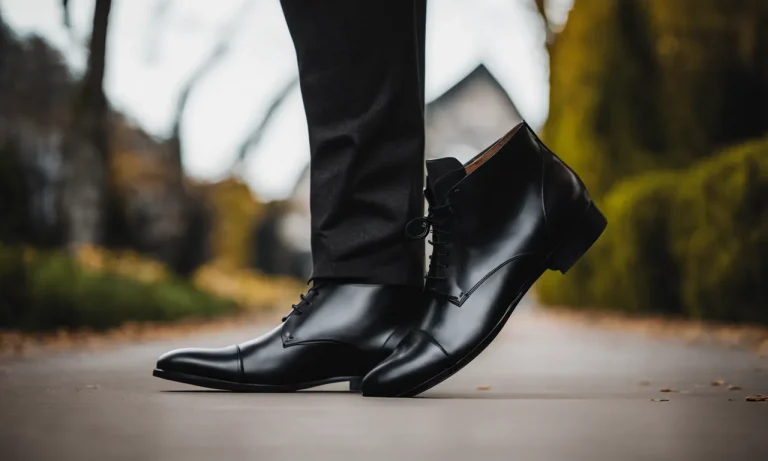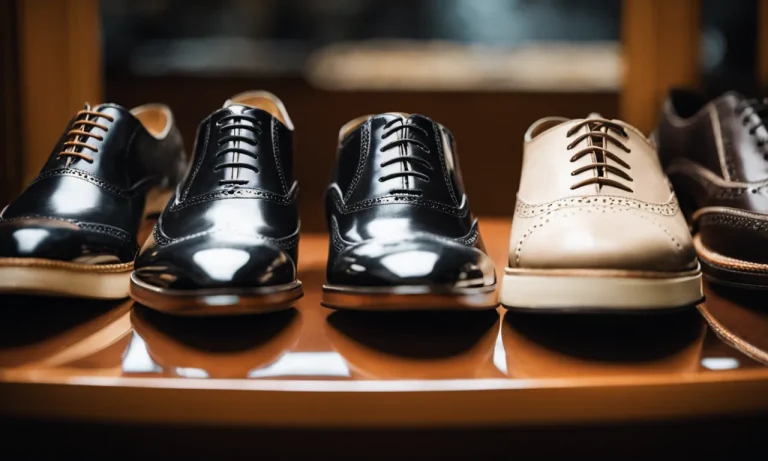Running is one of the most popular and accessible forms of exercise. With the right pair of running shoes, you can reap the cardiovascular, muscular, and mental health benefits of this activity. However, finding the perfect fit for your feet is crucial to prevent injury and discomfort.
If you’re short on time, here’s a quick answer to your question: you should size up about a half or full size when buying running shoes to leave enough room for your feet to swell and spread out during a run.
In this comprehensive guide, we’ll cover everything you need to know about getting the right running shoe size. You’ll learn key factors like foot shape, sock thickness, and swelling. We’ll also provide sizing tips for narrow, wide, and high arched feet.
How Running Changes Your Feet
Running is a popular form of exercise that offers numerous physical and mental benefits. However, it’s important to understand how this activity can impact your feet. Here are a few ways running can change your feet:
Swelling and Expanding
During a run, the repetitive impact and pressure on your feet can cause them to swell and expand. This is especially common during long-distance runs or intense training sessions. The swelling is a result of increased blood flow to the feet and the accumulation of fluid in the tissues.
It’s important to wear properly fitted running shoes to accommodate this swelling and prevent discomfort or pain.
Impact of Long Distances
Running long distances can have a significant impact on your feet. The repetitive motion and constant pounding can lead to various foot conditions such as plantar fasciitis, stress fractures, and blisters. It’s crucial to listen to your body and take necessary precautions to prevent injuries.
This includes wearing supportive shoes, gradually increasing your mileage, and incorporating rest days into your training regimen.
Breaking in New Shoes
When buying new running shoes, it’s important to give your feet time to adapt to them. Breaking in new shoes is essential to ensure a comfortable and injury-free running experience. Wear the shoes for shorter runs initially, gradually increasing the distance as your feet adjust to the new footwear.
This will help prevent blisters and discomfort caused by friction between your feet and the shoes.
For more information on how running affects your feet, you can visit reputable websites such as Runner’s World or Verywell Fit.
General Tips for Sizing Up
When it comes to buying running shoes, getting the right size is crucial for comfort and performance. While some people may find that their regular shoe size fits perfectly, others might need to go up in size. Here are some general tips to consider when sizing up:
Go Up a Half Size
One common tip for sizing up in running shoes is to go up a half size. This is especially helpful if you find that your toes are cramped or if you experience discomfort during your runs. Moving up a half size can provide some extra room in the toe box, allowing your toes to splay naturally as you run.
It can also help prevent blisters and black toenails, which are common issues when the shoes are too tight.
Try a Full Size Up for Wide Feet
If you have wide feet, going up a half size might not be enough. In this case, it’s worth trying a full size up to ensure a proper fit. Shoes that are too narrow can cause discomfort and pain, and can even lead to foot problems in the long run.
By going up a full size, you can give your feet the width they need to feel comfortable and supported.
Consider Your Foot Shape
Another factor to consider when sizing up is the shape of your feet. Some people have high arches, while others have flat feet or a normal arch. Understanding your foot shape can help you determine if you need to size up or not.
For example, if you have high arches, you may need to go up a half size to accommodate the extra height. On the other hand, if you have flat feet, you may need to size up to ensure proper support and stability.
It’s important to note that these tips are general guidelines, and individual preferences can vary. It’s always a good idea to try on different sizes and styles of running shoes to find the one that fits you best.
Additionally, consulting with a shoe specialist or getting a professional fitting can provide valuable insights into finding the right size for your specific needs.
The Effect of Different Socks
When it comes to buying running shoes, many people focus solely on the size of the shoe. However, the type of socks you wear can also have a significant impact on the fit and comfort of your shoes. Here are a few things to consider when it comes to the effect of different socks:
Thicker Socks Take Up More Room
If you prefer wearing thicker socks, it’s important to keep in mind that they will take up more room inside your shoes. This means that if you typically wear a snug-fitting shoe, you may need to size up slightly to accommodate the extra padding.
Thicker socks can provide additional cushioning and warmth, especially during colder months or longer runs. However, make sure not to go too far up in size, as overly large shoes can cause discomfort and potential injuries.
Moisture-Wicking Materials
Another factor to consider is the material of your socks. Moisture-wicking socks are designed to pull sweat away from your feet, keeping them dry and reducing the risk of blisters. These types of socks are typically made from synthetic materials such as polyester or nylon, which have excellent moisture-wicking properties.
By keeping your feet dry, moisture-wicking socks can help prevent discomfort and improve overall foot health.
Avoid Cotton Socks
While cotton socks may be comfortable for everyday wear, they are not the best choice for running. Cotton tends to absorb moisture and hold onto it, which can lead to damp feet and an increased risk of blisters. Instead, opt for socks made from synthetic or natural moisture-wicking materials.
These socks will help keep your feet dry and comfortable throughout your run.
Getting the Right Fit for Special Foot Types
When it comes to buying running shoes, getting the right fit is crucial, especially if you have special foot types. Your feet are unique, and finding shoes that accommodate your specific needs is essential for comfort and injury prevention.
In this section, we will discuss how to find the perfect fit for three different foot types: high arches, wide feet, and narrow feet.
High Arches Need Extra Space
If you have high arches, you’ll want to look for running shoes that provide extra space in the arch area. High arches can create pressure points on the foot, leading to discomfort and potential injury. Look for shoes with ample cushioning and arch support to help distribute your weight more evenly.
Additionally, consider sizing up to allow for enough room for your feet to move comfortably within the shoes.
Wide Feet Require Wider Toe Boxes
If you have wide feet, finding running shoes with wider toe boxes is essential. A narrow toe box can cause discomfort, blisters, and even toe deformities over time. Look for shoes specifically designed for wide feet or opt for brands that offer a wider fit option.
When trying on shoes, make sure there is enough space for your toes to wiggle without feeling cramped. Sizing up may also be beneficial for those with wide feet to ensure a comfortable fit.
Narrow Feet Should Stick True to Size
For those with narrow feet, sticking to your true shoe size is generally recommended. Narrow feet can easily slide around in shoes that are too big, leading to instability and potential injuries. Look for shoes with a snug fit that hold your feet securely in place.
Consider trying on different brands and styles to find the best fit for your narrow feet. If you find that a particular shoe runs large, you may need to size down, but in most cases, sticking to your true size should provide a comfortable fit.
Remember, everyone’s feet are different, and these guidelines are meant to serve as a starting point. It’s always a good idea to try on multiple pairs of shoes and test them out before making a final decision.
Consulting with a professional shoe fitter or podiatrist can also be helpful in finding the right fit for your special foot type.
Using Inserts and Orthotics
When it comes to finding the right fit for your running shoes, inserts and orthotics can play a crucial role. These customizable options can help address specific foot issues and improve comfort while running.
However, there are a few important considerations to keep in mind when using inserts and orthotics.
Orthotics Limit Space in Shoe
Orthotics are specially designed inserts that are prescribed by a healthcare professional to provide support and correct foot abnormalities. While they can be extremely beneficial for individuals with conditions like flat feet or high arches, it’s important to note that they may limit the space inside your shoes.
This means that if you already have a tight fit, adding orthotics might make the shoes feel even more snug. It’s important to try on the shoes with the orthotics before making a purchase to ensure proper fit and comfort.
Some Inserts Add Cushioning
There are various types of inserts available in the market, and some of them are specifically designed to add cushioning to your running shoes. These inserts can provide extra comfort and shock absorption, which can be particularly beneficial for individuals who have joint or heel pain.
They can help reduce the impact on your feet and legs during your runs, allowing you to go the extra mile without discomfort. It’s worth exploring different types of inserts to find the one that suits your specific needs.
Removing Insoles May Create More Room
If you find that your running shoes feel too tight with the inserts or orthotics, one option you can consider is removing the shoe’s insoles. This can create additional space inside the shoe, allowing for a more comfortable fit.
However, it’s important to note that removing the insoles may affect the shoe’s overall support and cushioning. It’s best to consult with a professional or try on the shoes without the insoles to determine if this is a suitable solution for you.
Remember, finding the right fit for your running shoes is essential for a comfortable and injury-free running experience. Inserts and orthotics can be valuable tools in achieving this, but it’s important to consider their impact on shoe fit and overall performance.
Experiment with different options and seek professional advice if needed, to ensure that you find the perfect combination for your feet.
Conclusion
Finding the ideal running shoe size comes down to leaving enough space for your feet to move and swell naturally. While most runners should go up about a half or full size, factors like foot width, arch height, and sock choice all impact fit.
Give your feet room to breathe and spread out for a comfortable, blister-free run every time you lace up.
By sizing up, using appropriate sock materials, and considering your individual foot anatomy, you can achieve that perfect locked-in feel for mile after mile. A great running shoe fit can make you feel like you’re floating on air.


